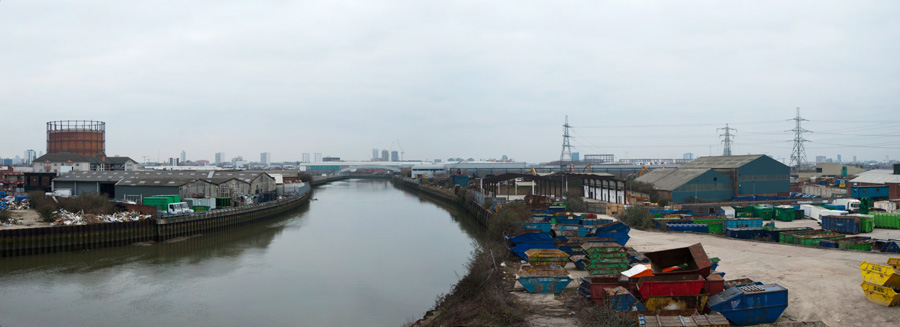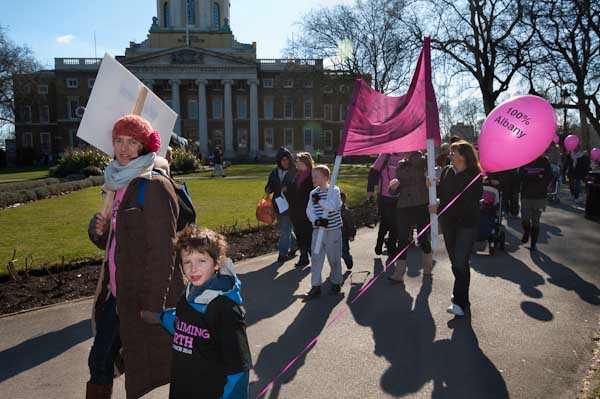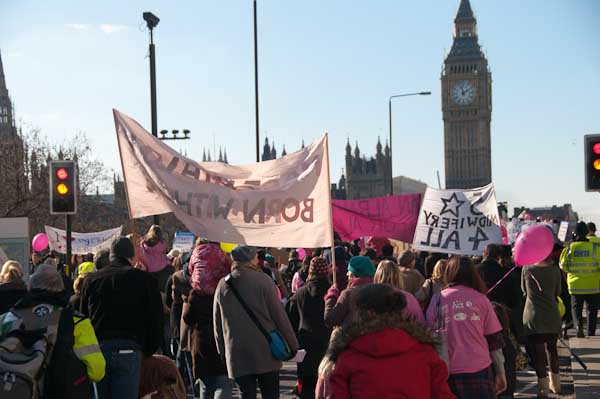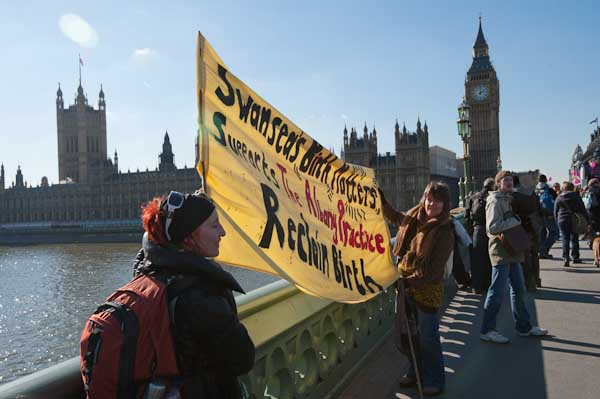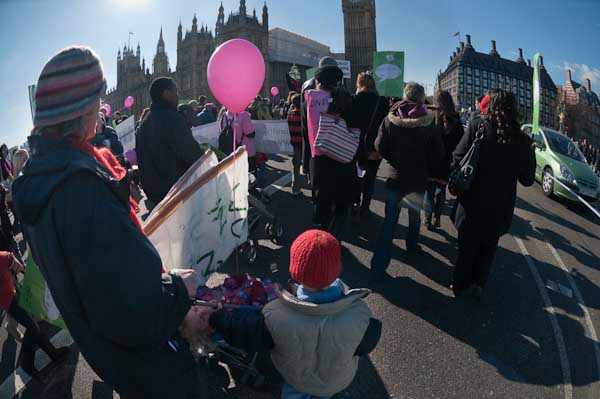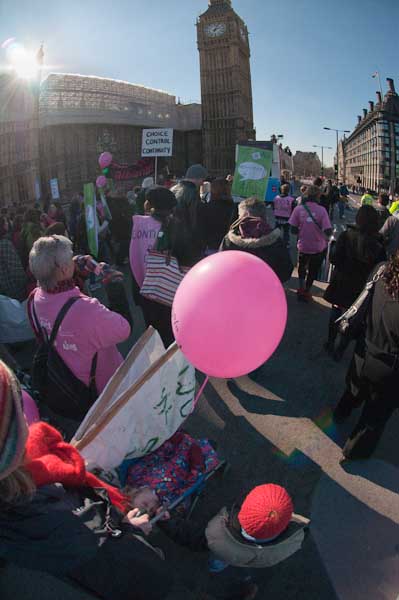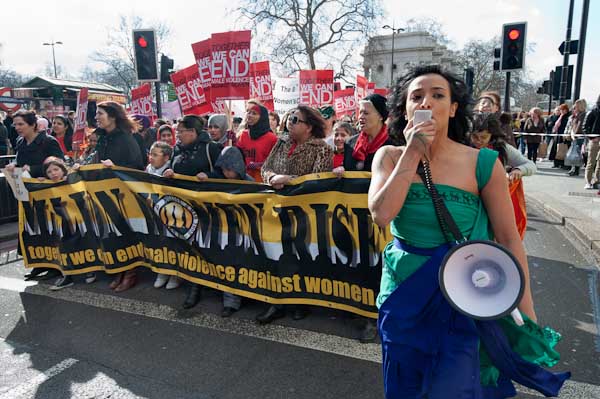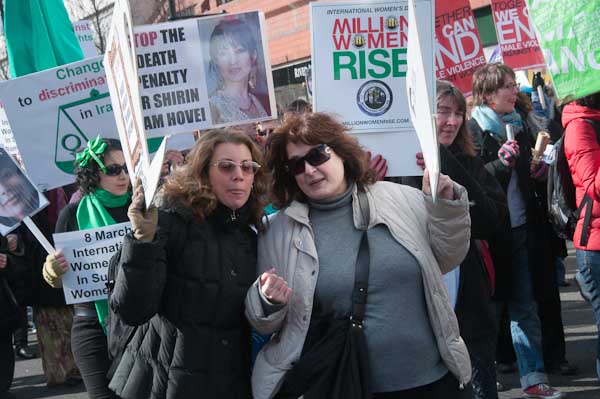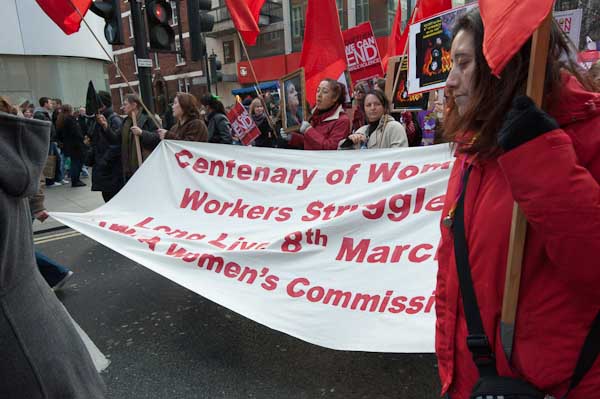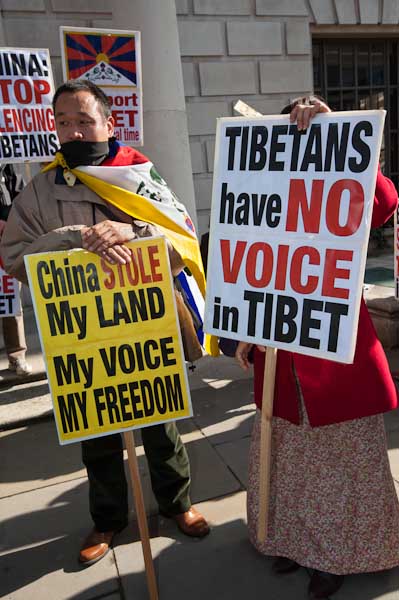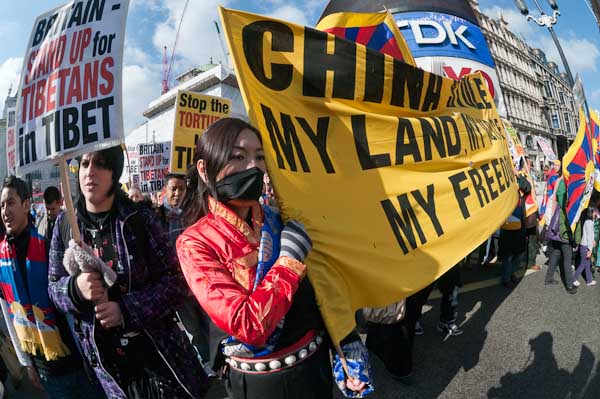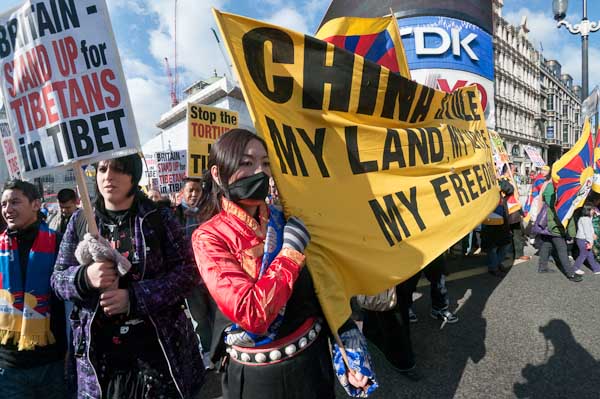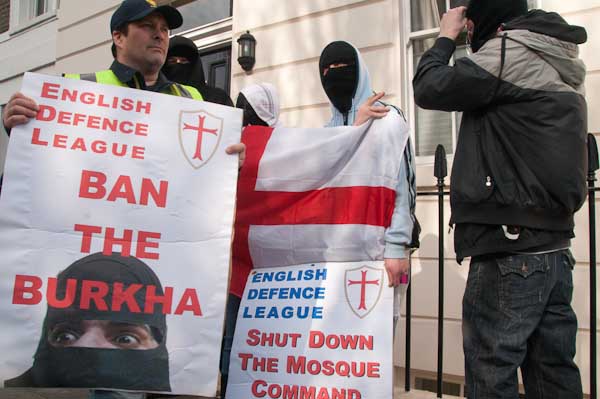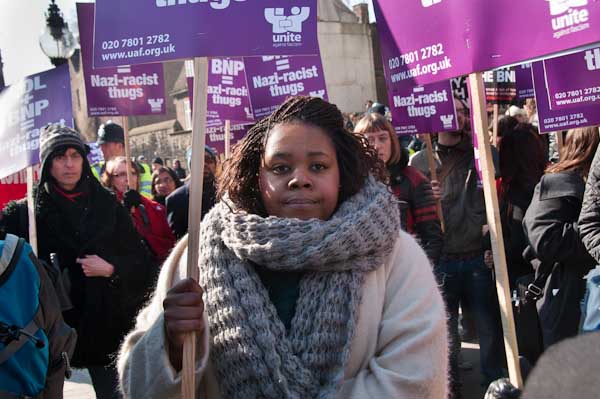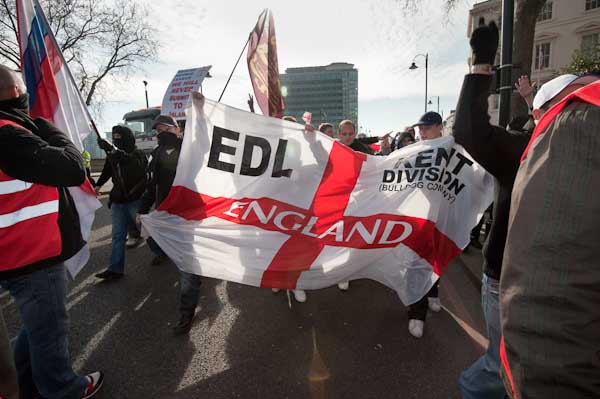Holloway Prison, the best-known women’s prison* in England, is not a fun place for anyone to be, either inside or outside, where it always seems somehow isolated and bleak even though it is in inner London. It’s next to a road junction which is part of a largish one-way system, and set a few yards back from the road behind some ill-kept grass and shrubs. Across the wide street of east-bound traffic is a defunct petrol station, and every time I’ve visited there has been an icy wind from the east blowing across the largely open space.
Thursday night it was cold, just a few degrees above freezing and the wind chill soon got into my bones. It’s a place with no shelter.
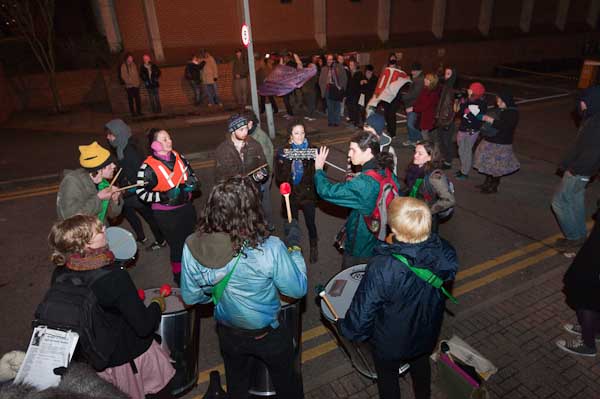
Virtually all the light for this picture came from a Nikon SB800 on camera
Outside the prison were a small group of demonstrators with banners. Inside were three women held without charge or trial (we do have a justice system in England, but it doesn’t seem to work for asylum seekers and migrants without proper documents) accused of being ring-leaders in a hunger strike still continuing three weeks later without them in the immigration detention centre (a prison in all but name, where people are routinely held without trial) at Yarl’s Wood.
By the time I left to catch a bus an hour later, the numbers had swollen to around 50 and included a samba band whose music did do a little to warm us up. But although I’d dressed for the weather I had really needed an extra layer for the steppes of Holloway.
More pictures and more about Yarl’s Wood and the hunger strikers in my piece Holloway Protest for Yarl’s Wood Women on My London Diary (also published elsewhere.)
Normal street lighting is enough to give some fill when working with flash at night if you take advantage of the high ISOs that are now perfectly usable. But the short driveway into the prison was only lit by a few low wattage bulbs which added nothing. Essentially direct flash was the only light source for photography.
This of course has its problems. It isn’t very interesting lighting being close to the lens and gives a harsh shadow because of its small size. And there is the inverse square law.
Traditionally photographers used flash brackets to take the flash further from the lens, or held the flash at arms length, but although these may make the lighting more interesting they also increase the shadow problem.
Social photographers often use weird and wonderful attachments on their flash to create a larger light source – I used to have my own favourite device made with an old translucent bottle, some aluminium foil, a couple of rubber bands and a little ingenious copying of other people’s ideas, which although it looked a touch Heath Robinson, did the job remarkably well, but these things are not too suitable for demonstrations and don’t help a lot when working a larger distances, partly because the light source still appears small, but also because they cut the light down too much.
The compromise favoured by many photojournalists was the Sto-Fen Omnibounce, a small translucent clip on diffuser, and most flash units now come with an inferior copy of this device. It actually has very little effect (a euphemistic way of saying sod all) on the light quality according to my own tests, but it does make you feel better and gives more even light with wide-angles. So I was annoyed to find that I had forgotten to put it in my camera bag. However it probably would not have made much difference to the pictures!
I do sometimes claim to have a special derogation from the inverse square law when people ask about some of my pictures, though I seldom explain this.
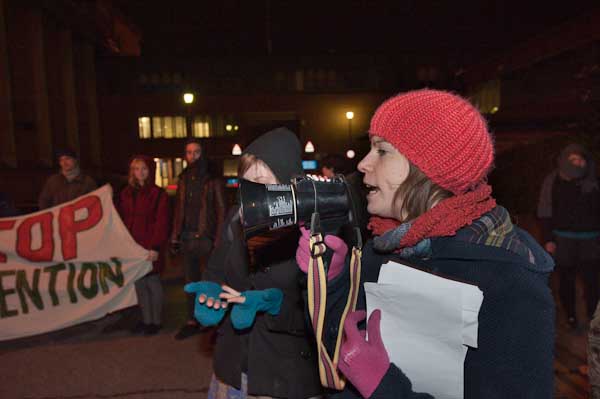
Extreme differences in lighting needed a little Lightroom magic
The inverse square law if you are not familiar with it states that the light from a point source – and a camera flash is more or less that – falls off with with the square of the distance from the source. So if you imagine a picture with one person at 4 feet from the camera/flash and another at 8 feet, double the distance, the further person gets 1/4 (4=2squared) of the illumination. Its perhaps easier to think as a photographer that 2x the distance means 2 stops down and so on.
So if you expose for the close person, the distant guy is 2 stops under; and if you expose for the distant one, your near neigbour is at 2 stops over and likely to be pretty much burnt out white. It’s something that photographers like Winogrand and Friedlander used to great effect, but digital is less forgiving of overexposure than film and it is not in any case an effect that will generally endear you to editors.
You need either to get everyone at more or less the same distance from your camera, or expose very carefully to put the closest person just on the edge of burning out. If you do that, then you can burn the over-bright areas down in Lightroom (or Photoshop) and brighten the more distant dark parts. Virtually everything I took at Holloway needed something of this treatment. The results aren’t great but they are a lot better than they would otherwise have been.
While taking pictures I was asked by the reporter for a small local newspaper if I would supply them with pictures. He was apologetic when I enquired about rates and could only offer a by-line and I declined. I think events like this are a good example of why photographers are still needed, even when everyone has a digital camera. And if people need photographers they have to be prepared to pay for them.
* Holloway prison opened in 1852 as a mixed prison but became prison for women alone in 1902, just in time for the suffragettes. It was demolished and completely rebuilt on the same site in the 1970s and early 80s as a rather depressive red brick block, but some reports at least on the Internet still use the pictures of the rather impressive Victorian ‘castle’ that would have been a much preferable backdrop to my pictures!
